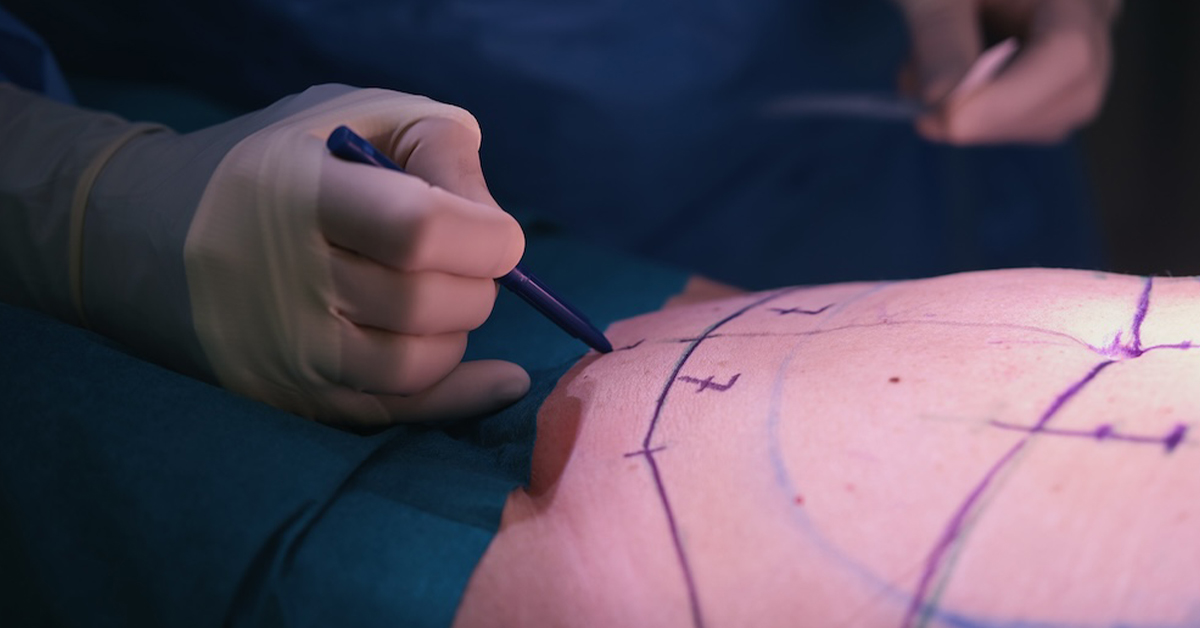Gynecomastia vs Fat: Understanding Your Chest Condition
When it comes to male chest enlargement, distinguishing between gynecomastia and simple chest fat buildup can be a challenge. Gynecomastia, a condition in which glandular breast tissue develops in the male pectoral region, is distinct from Pseudogynecomastia, which refers to fatty deposits resulting from obesity. Understanding the difference between these two conditions is crucial, as gynecomastia often leads to self-consciousness and avoidance of situations where one’s chest is exposed.
- Gynecomastia and pseudogynecomastia are distinct conditions, with the former involving glandular breast tissue development and the latter involving mere fat deposits.
- Hormonal imbalances, specifically elevated estrogen levels or diminished testosterone levels, can lead to gynecomastia.
- Pseudogynecomastia is primarily caused by obesity and can often be addressed through weight loss and lifestyle changes.
- A proper diagnosis and understanding of whether you have gynecomastia or pseudogynecomastia is important, as the treatment plans for each condition are very different.
- Both gynecomastia and pseudogynecomastia are treatable conditions, and help is available for those who struggle with these conditions and wish to improve their chest contour and overall quality of life.
Defining Gynecomastia: More Than Just Chest Fat
While many people might believe that excessive chest weight is the result of simple fat buildup, there is a distinct medical condition called gynecomastia that involves male breast tissue growth. This condition differs from pseudogynecomastia, which is characterized by a fatty chest due to obesity. Understanding the complexities of these two conditions and the role of hormonal imbalances is essential for identifying the appropriate treatment and management strategies.
What is gynecomastia? It is an overgrowth of glandular breast tissue in men, not just a result of excess chest fat or obesity.
Gynecomastia is often triggered by hormonal imbalances that lead to an abnormal elevation in estrogen levels. This hormonal fluctuation can cause the development and growth of glandular breast tissue, setting gynecomastia apart from pseudogynecomastia. In fact, these two conditions may coexist in some cases. Both genetic and environmental factors can influence the development of gynecomastia, such as liver disease, genetic disorders, medication side effects, and age-related hormonal changes.
| Gynecomastia | Pseudogynecomastia |
|---|---|
| Growth of glandular breast tissue | Fatty chest due to obesity |
| Triggered by hormonal imbalances | Result of excessive chest weight |
| May coexist with pseudogynecomastia | Does not involve glandular tissue development |
| Associated with various factors like liver disease, genetic disorders, medication side effects, and age-related hormonal changes | Largely due to lifestyle factors such as diet and exercise |
Now that you have a general understanding of gynecomastia and its distinction from simply carrying excess chest weight, it is imperative to delve deeper into its hormonal roots. In the following sections, we will explore the roles of hormones in male breast tissue growth, comparing the glandular breast development in gynecomastia with the fatty chest seen in pseudogynecomastia.
Exploring the Hormonal Roots of Gynecomastia
Understanding the hormonal influences behind gynecomastia is essential to differentiate it from weight-related chest fat. This section illustrates the impact of hormonal imbalances on male mammary gland growth and how estrogen contributes to glandular tissue development.
Identifying Hormonal Imbalances Leading to Male Breast Enlargement
Various life stages can lead to fluctuations in hormones, affecting breast tissue growth in males. Newborns may exhibit transient gynecomastia due to maternal hormonal impact, while puberty can cause gynecomastia to persist or reoccur as a result of fluctuating male hormone levels. Elevated estrogen or diminished testosterone levels are two primary hormonal imbalances that contribute to male breast enlargement. Whether due to the natural aging process, genetic factors, or certain medications, addressing these imbalances can help treat the condition.
The Link Between Hormones and Breast Tissue Growth in Males
Glandular gynecomastia and weight-related chest fat can look similar, but they develop through distinct physiological processes. While fat accumulation results in a soft, diffused chest appearance, hormonal fluctuations, specifically increased estrogen or decreased testosterone, stimulate the growth of glandular breast tissue in males. This key difference in endocrine-related breast augmentation highlights the importance of addressing the root cause of the condition.
The Role of Estrogen in Glandular Breast Development
Estrogen significantly influences breast gland enlargement by promoting the growth of breast glands. This effect contrasts with general weight gain that leads to chest obesity. The impact of estrogen on breast tissue is most apparent in gynecomastia cases resulting from hormonal causes, such as puberty or aging-related hormonal imbalances. Treatment plans that address hormonal factors may include hormonal therapy, medication changes, or surgical interventions, depending on the patient’s unique circumstances.
Chest Adiposity vs Gynecomastic Condition: Distinguishing Factors
Understanding the differences between a gynecomastic condition and chest adiposity is crucial to select appropriate treatment for your chest contour. The physical appearance and texture are key factors that can help you distinguish between the two conditions. Let’s explore some gynecomastia symptoms, breast firmness, and how fatty gynecomastia compares with pseudogynecomastia.
Male breast enlargement due to gynecomastia characteristically has firmer glandular breast tissue underneath the nipple, while pseudogynecomastia features a more even and fatty texture.
Note the following differences in terms of visual appearance and feel:
- Both conditions may cause an enlarged chest appearance, but gynecomastia typically prompts for a more cone-shaped or protruding breast compared to the softer look in pseudogynecomastia.
- Gynecomastia tends to develop the breast enlargement asymmetrically, unlike the symmetrical pattern witnessed in pseudogynecomastia.
- Breast firmness is another distinguishing factor, with gynecomastia presenting a rubbery or firm consistency, while chest adiposity (pseudogynecomastia) feels softer with even distribution of fat.
- Gynecomastia is often non-responsive to diet and exercise, as the underlying cause is hormonal. In contrast, pseudogynecomastia can often be managed through lifestyle changes.
| Gynecomastia (Glandular) | Pseudogynecomastia (Fatty) |
|---|---|
| Firmer breast tissue underneath the nipple | Even and fatty texture throughout the chest |
| Cone-shaped or protruding breast | Softer and less protruding chest |
| Asymmetrical breast enlargement | Symmetrical fat distribution |
| Non-responsive to diet and exercise | Responds to lifestyle modifications |
Knowing these differences between male breast enlargement due to gynecomastia and chest adiposity is essential for determining the appropriate course of action, as the right treatment for these conditions varies depending on the root cause. Remember to consult with a healthcare professional to properly diagnose your condition before embarking on any treatment plan.
Gynecomastia Through Different Stages of Life
While gynecomastia can occur at any age, it is particularly prevalent during certain life stages. This section will discuss the hormonal changes that contribute to gynecomastia in adolescence and the factors that can lead to its resurgence in older men.
Gynecomastia in Adolescence: A Hormonal Phase?
Gynecomastia in adolescence is a common phenomenon, afflicting a significant portion of male teens. This cosmetic concern often arises due to puberty-related breast tissue growth, which is typically a temporary issue. As young males experience significant hormonal fluctuations during this stage of life, their estrogen levels may temporarily rise, leading to the development of excess breast tissue.
Luckily, in most cases, this growth is a harmless, transitory phase. The majority of adolescent gynecomastia cases resolve naturally as hormone levels stabilize post-puberty. However, for some individuals, the male breast appearance does not fully normalize, prompting them to seek male breast reduction through cosmetic procedures.
Why Men Experience Gynecomastia As They Age
The incidence of gynecomastia tends to increase as men age. The primary contributing factor to this phenomenon is the natural decline in testosterone levels coupled with an increase in body fat. These changes may exacerbate hormonal imbalances, ultimately leading to male hormonal chest enlargement.
In older men, gynecomastia can also be an indicator of other underlying medical conditions, such as liver disease or hormonal disorders. As such, it is crucial to seek professional advice and medical evaluations when experiencing unusual breast enlargement in later stages of life.
Depending on the severity of the condition and its impact on the individual’s quality of life, various treatments may be considered. For older men considering breast reduction surgery, it is essential to explore the available options and thoroughly discuss them with a qualified medical professional to ensure the best course of action.
| Life Stage | Contributing Factors |
|---|---|
| Adolescence | Hormonal fluctuations during puberty, temporary increase in estrogen levels |
| Aging | Declining testosterone levels, increased body fat, potential underlying medical conditions |
Physical Examination: Detecting Glandular Tissue vs Fatty Chest
Understanding the differences in chest appearance and composition is crucial for determining the origin of a protruding male chest. During a physical examination, healthcare professionals can detect whether the enlargement is due to glandular breast tissue stiffness or chest fat characteristics. This distinction is essential in choosing the appropriate treatment option, such as male breast liposuction or hormonal therapies.
The primary diagnostic technique for differentiating between glandular and fatty tissue in the chest is palpation. It involves feeling both the chest area’s surface and underlying structures by gently applying pressure with the fingers. Finding a firm, rubbery lump beneath the nipple indicates glandular gynecomastia, whereas uniformly soft and compressible chest fat suggests pseudogynecomastia.
“The primary diagnostic technique for differentiating between glandular and fatty tissue in the chest is palpation.”
Let’s compare some characteristics of glandular gynecomastia and pseudogynecomastia:
| Glandular Gynecomastia | Pseudogynecomastia |
|---|---|
| Firm, rubbery breast tissue beneath the nipple | Soft, compressible chest fat |
| Localized enlargement in the breast region | Widespread distribution of fatty tissue across the chest |
| Unresponsive to diet and exercise alone | Often responds to weight loss interventions |
| Potentially caused by medical conditions or medications | Primarily associated with obesity and lifestyle factors |
Aside from palpation, imaging technologies such as ultrasound, mammography, or MRI can help visualize and determine the prevalence of glandular tissue or fatty chest deposits. However, these are usually done on a case-by-case basis and depend on the healthcare provider’s assessment and individual patient factors.
Lifestyle and Medical Interventions for Male Chest Contouring
Successfully addressing gynecomastia and pseudogynecomastia requires a targeted, tailored treatment plan that accounts for each individual’s unique circumstances. This section will discuss various lifestyle modifications, hormonal treatment options, and surgical procedures that can help improve the appearance and contour of the male chest.
Navigating Treatment Options for Gynecomastia
The first step in addressing gynecomastia is receiving a thorough medical diagnosis to determine the root cause of the condition. Once the underlying factors have been identified, appropriate treatment options can be explored. Treatment for gynecomastia can range from addressing hormonal imbalances through medication to surgical interventions such as excision or VASER liposuction for more severe cases.
It is essential to consult with a healthcare professional to determine the most appropriate treatment plan based on your individual needs and medical history.
| Treatment Option | Description |
|---|---|
| Hormonal Therapy | Medications that help balance hormone levels; prescribed based on the specific hormonal imbalances contributing to gynecomastia. |
| Excision | Surgical removal of glandular tissue, often combined with liposuction for a more contoured result. |
| VASER Liposuction | A minimally invasive liposuction technique that uses ultrasound waves to break down fat cells, effectively treating both gynecomastia and pseudogynecomastia. |
Weight Loss and Chest Fat Reduction: Efficacy and Approaches
For those dealing with pseudogynecomastia, lifestyle modifications such as diet and exercise can play an important role in reducing chest fat. By losing weight, you can improve the appearance of your chest, but for some individuals, non-responsive fat deposits may persist after they have achieved significant weight loss. In such cases, cosmetic surgery options like liposuction may be beneficial and necessary to achieve the desired chest contour.
- Diet: Consuming a balanced diet that promotes weight loss by focusing on whole foods, lean proteins, and reducing refined carbohydrates and added sugars.
- Exercise: Engaging in regular physical activity that includes a mix of both cardiovascular exercises and strength training to help improve muscle tone and reduce chest fat.
- Liposuction: If lifestyle modifications do not yield the desired results in chest fat reduction, cosmetic surgery options like liposuction can be explored to remove stubborn, localized fat deposits and enhance the male chest contour.
Ultimately, a combination of lifestyle changes, hormonal treatment options, and surgical interventions can help you achieve the desired male chest contour and alleviate the physical and emotional burden associated with gynecomastia and pseudogynecomastia.
Conclusion
Gynecomastia and pseudogynecomastia are two distinct male chest conditions that can cause discomfort and emotional distress. Gynecomastia, characterized by glandular breast tissue development, is often the result of hormonal imbalances, while pseudogynecomastia presents as excess chest fat. Both of these conditions can lead to a droopy chest appearance and saggy chest, but effective treatments are available for addressing these cosmetic concerns.
It is essential to seek a professional diagnosis to determine the root cause of your male chest condition. Once accurately diagnosed, various treatment options can be explored, ranging from hormonal therapy for gynecomastia to weight loss and chest fat reduction approaches for pseudogynecomastia. In some cases, cosmetic procedures like liposuction might be recommended for more effective chest contouring results.
You don’t have to live with the burden of an enlarged or unshapely chest. With proper guidance from healthcare professionals and tailored treatment plans, you can regain confidence in your appearance and improve your overall quality of life. Remember, help is available, and addressing your male chest condition is within your reach.
Schedule a Gynecomastia Surgery Consultation in Miami, FL
Kickstart your journey towards Gynecomastia Surgery in Miami, FL by arranging a consultation with our team. In this session, we’ll delve into your aspirations, assess your specific situation, and craft a tailored treatment strategy for you.
For further details or to set up a consultation, reach out to us at (305) 406-9055 or easily schedule online today.







